![]()
Thursday, October 29, 2015 | By Dr. Raz Zimmt[1]
This study is originally published by The Meir Amit Intelligence and Terrorism Information Center. The study is structured in nine sections (see below), which if read in conjunction with each other, draws a complete picture of Major General Qasem Soleimani (Haj Qasem), commander of the Iranian Islamic Revolutionary Guards Corps’ Qods Force, instigator of Iranian Subversion and Terrorism in the Middle East and around the Globe.
Overview
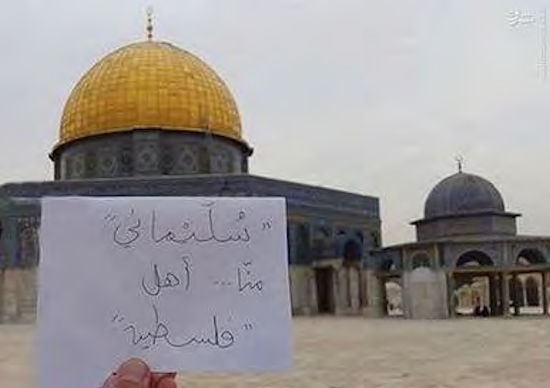
“Soleimani, from us, the residents of Palestine.” Support for Soleimani in east Jerusalem (Facebook page of Haj.Qasem.Soleimani, April 13, 2015).
Since the 1990s, the Qods Force has operated in the Palestinian arena to encourage, promote and finance terrorist attacks against Israel. The Qods Force has been involved in smuggling weapons into the West Bank and the Gaza Strip. It supports most of the Palestinian terrorist organizations, especially Hamas and the PIJ, with funding, training and guidance, and has also provided technical operational support, including specifications for manufacturing weapons.
During the second intifada Iran supported the terrorist organizations operating in the West Bank and the Gaza Strip, either directly or through Hezbollah. Following the Hamas takeover of the Gaza Strip in 2007, Iranian support, transferred by the Qods Force, was moved mainly to the Gaza Strip. The Qods Force provided Hamas and the PIJ with military (training, information), financial, political and media support. Iran saw the establishment of Hamas rule in the Gaza Strip as a way of gaining leverage for an armed campaign against Israel and for advancing its influence in the Palestinian arena. The exposure of the Israeli home front to rocket fire during the rounds of armed confrontation between Israel and the terrorist organizations in the Gaza Strip, the most recent of which was Operation Protective Edge, showed the Iranians the great benefits they could reap by constructing a military infrastructure for Hamas and the PIJ.
In addition, the Qods Force engages in the direct handling of agents in Israel for intelligence and terrorist objectives. Its goal is to construct an infrastructure for future terrorist activity, according to the regional considerations of Iranian policy. In all probability Qasem Soleimani is involved, although most of his attention currently focuses on Syria and Iraq.
The rift with Hamas
The civil war in Syria undermined the cohesion of Iranian-led “resistance camp” and caused a deep rift between Iran and Hamas. As Tehran increased its involvement in Syria by supporting the Assad regime, Hamas turned its back on Iran and supported the Syrian opposition. Iran’s disappointment caused it to significantly limit its aid to Hamas, although it did not stop it entirely. The fall of the Muslim Brotherhood rule in Egypt in the summer of 2013 raised hopes in Tehran that it might be possible to rehabilitate relations with Hamas. That would make it possible for Iran to regain its foothold in the Gaza Strip, increase its influence in the Palestinian arena, and strengthen the “resistance camp.” Hamas understood that more than ever, it needed Iran for financial and operational support, especially in view of the deteriorations of its relations with Egypt.
Operations Pillar of Defense and Protective Edge
During Operation Pillar of Defense in November 2012 and Operation Protective Edge in July-August 2014 the military capabilities Iran had constructed for Hamas and the PIJ were put to the test. Those capabilities, especially rocket capabilities, had been constructed with massive Iranian support. In the years before the operations Iranian weapons had been transported to the Gaza Strip overland, by air and by sea through the use of border-crossing networks of smugglers and merchants.
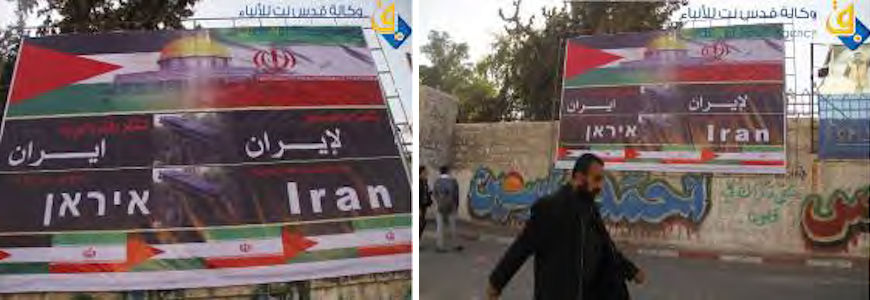
Posters thanking Iran in four languages, hung in the Gaza Strip after Operation Pillar of Defense (Quds.net, November 29, 2012). They were apparently the work of the PIJ, a Palestinian terrorist organization with very close relations with Iran.
Operation Protective Edge provided the Iranian leadership with another opportunity to support the Palestinian terrorist organizations. During the operation Qasem Soleimani was vocal about the developments in the Gaza Strip. In a public message to the Palestinians transmitted by the Iranian media, he rejected Israel’s demand for the demilitarization of the Gaza Strip and claimed that disarming the “weapon of resistance” was false propaganda and an illusion that would never be realized and that Israel would take with it to its grave. He declared that “Palestine is a volcano that will only be extinguished when we destroy the regime of occupation” and that the events in Palestine “fill the hearts of the Iranians with blood, pain and anger that will explode onto the Zionists when the time comes.” He claimed that “Iran will continue its support of the resistance until we turn the land, the air and the continent into hell for the Zionists…We wish to die as martyrs. Death as a martyr on the way to Palestine and Jerusalem is the wish and pride of every Muslim. In this important moment in the history of our nation, I call on all our bothers to use a rifle, a weapon, blood and honor to defend humanity and Islam in Palestine” (Serat News, July 30, 2014).
The Iranian regime saw in Operation Protective Edge an opportunity to rehabilitate its relations with Hamas and perform an important function in the Palestinian arena. Iran’s desire to exploit the opportunity was clear in the declarations made by senior officials, led by Supreme Leader Ali Khamenei. On July 23, 2014, Khamenei gave a speech for World Jerusalem Day, marked every year on the final Friday of the Muslim religious month of Ramadan. Not only did he express support for the Palestinians, but in an exceptional gesture he also called for the arming of the West Bank. Other senior Iranian officials followed his lead. Amir Ali Hajizadeh, chief of the IRGC’s aerospace division, claimed that arming the Palestinians in the West Bank would speed the destruction of Israel (Fars News, July 25, 2014). The Basij wing of the IRGC announced the opening of a bank account to raise funds for arming the Palestinians, in accordance with instructions from Supreme Leader Ali Khamenei (Fars News, July 24, 2014).
The period after Operation Protective Edge
Iran’s expectations of improved relations with Hamas went unmet in the wake of the dramatic events unfolding in the Middle East, the fruit of the regional upheaval. Hamas, with its Muslim Brotherhood ideology, found it difficult to stand by Shi’ite Iran, which was supporting Shi’a-affiliated rebels, militias and regimes against Sunni states and regimes. The Saudi Arabian attack on Yemen in March 2015 (Operation Decisive Storm) worsened relations between Iran and Hamas. When the attack began, Hamas issued a statement supporting the ousted Yemeni president and the Saudi attack. Iran regarded it as yet another slap in the face from Hamas and proof Hamas preferred relations with Saudi Arabia and the Sunni camp to closer ties to Tehran.
The visit of Khaled Mashaal, the Hamas leader, to Saudi Arabia in July 2015 worsened the Iran-Hamas crisis and the planned visit of a Hamas delegation to Iran was cancelled. However, the ties between Iran and Hamas’ military-terrorist wing continued despite the political tensions. In practical terms, Iran’s ability to send advanced rockets and weapons to the terrorist organizations in the Gaza Strip overland, by sea and through the vast network of smuggling tunnels became seriously limited in the wake of Operation Protective Edge and the intensive Egyptian crackdown on the tunnels along Egypt’s border with the Gaza Strip (part of Egypt’s conflict with the ISIS branch in the Sinai Peninsula).
In the meantime, developments in Iraq and Syria made it necessary for Iran to invest most of its efforts in halting the progress of ISIS and defending the Assad regime. That was because to a great degree, Iran’s order of strategic preferences currently limits the Qods Force’s ability to invest excessively in promoting the Iranian regime’s objectives in the Palestinian arena. One indication of that is the conspicuous absence of Qasem Soleimani’s personal involvement in the events in the Palestinian arena in the past two years. However, that may change, depending on future developments in Syria, Iran and the Palestinian-Israeli arena.
Israel
In the past, Israel was an important target for the Iranian regime’s intelligence and terrorism activity. It was undertaken directly by the Qods Force and other Iranian agencies, and indirectly by Hezbollah. Israel exposed operatives, mostly from Lebanon and Muslims from Europe, sent by Iran and Hezbollah. Most of them were exposed by the Israel security services and put on trial.[8]
On September 11, 2013, Ali Mansouri, an Iranian intelligence agent, was detained at the Ben Gurion International Airport. He had been recruited by the IRGC in Iran and sent to Israel posing as a Belgian businessman named Alex Mans. His operators had instructed him to start businesses in Israel that could serve as the foundation for covert Iranian activity against Israeli and Western interests. He was promised a million dollars in return. He paid three visits to Israel using his false Belgian identity, during which he made efforts to develop ties and sign contracts with businesses in Tel Aviv. On October 6, 2013, he was indicted for espionage and aiding an enemy.[9]
Ali Mansouri had previously visited Israel for his operators twice, once in July 2012 and once in January 2013. His last visit was between September 6 and September 11, 2013, and ended with his detention. At the time of his detention he was found to be carrying pictures of various locations in Israel, including Ben Gurion International Airport and the American embassy in Tel Aviv. He was operated by a Qods Force special ops unit commanded by Hamed Abdollahi and Majid Alavi. It is probable that Soleimani knew about Ali Mansouri because he is aware of Qods Force activities, although most of his attention is currently devoted to Iraq and Syria.
![]()
You can find the introduction and other sections here:
- Introduction: Portrait of Qasem Soleimani, commander of the Iranian Islamic Revolutionary Guards Corps’ Qods Force
- Section 1: A short biography of Qasem Soleimani
- Section 2: Qasem Soleimani’s involvement in the Syrian civil war
- Section 3: Qasem Soleimani’s involvement in Iraq
- Section 5: Qasem Soleimani’s involvement in Lebanon
- Section 6: Qasem Soleimani’s involvement in Yemen and other Middle Eastern states
- Section 7: Qasem Soleimani’s involvement in internal Iranian politics
- Section 8: Qasem Soleimani’s public image
- Section 9: Possible lifting of international sanctions on Qasem Soleimani in the wake of the nuclear agreement
![]()
Notes:
[1] This study of Qasem Soleimani was written for the Intelligence and Terrorism Information Center (ITIC) by Dr. Raz Zimmt, a research fellow in the Alliance Center for Iranian Studies in Tel Aviv University and a research fellow at the Forum for Regional Thinking. His fields of expertise include the politics, society, foreign policy and social networks in the Islamic Republic. The study was coordinated with ITIC research fellows and includes information previously appearing in ITIC publications about the Qods Force.
[8] Israel Security Agency, September 29, 2013.
[9] For further information about Qods Force activity against Israel see the August 7, 2012 bulletin, “The Quds Force, an elite unit of the Iranian Revolutionary Guards, spearheads Iran’s global terrorist campaign.”



 RSS
RSS

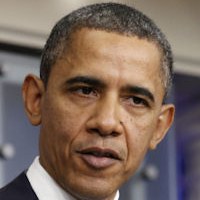
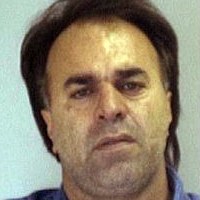
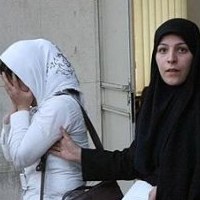
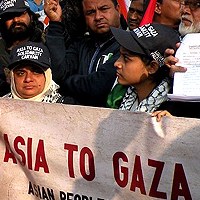








Latest Comments
Hello Mike, Thank you for your positive feedback to the article. I felt there wasn’t too much critical analysis of ...
Thanks for this considered and well constructed article. A follow up article on the manner in which the editorial contro...
THE CLUELESSNESS OF CLAIMING THAT OBAMA'S MIDDLE EAST POLICIES WERE A FAILURE CANNOT BE FURTHER FROM THE TRUTH, WHAT THE...
As long as Obama is the president of the usa do not trust the us government......
Thank you for an good read....